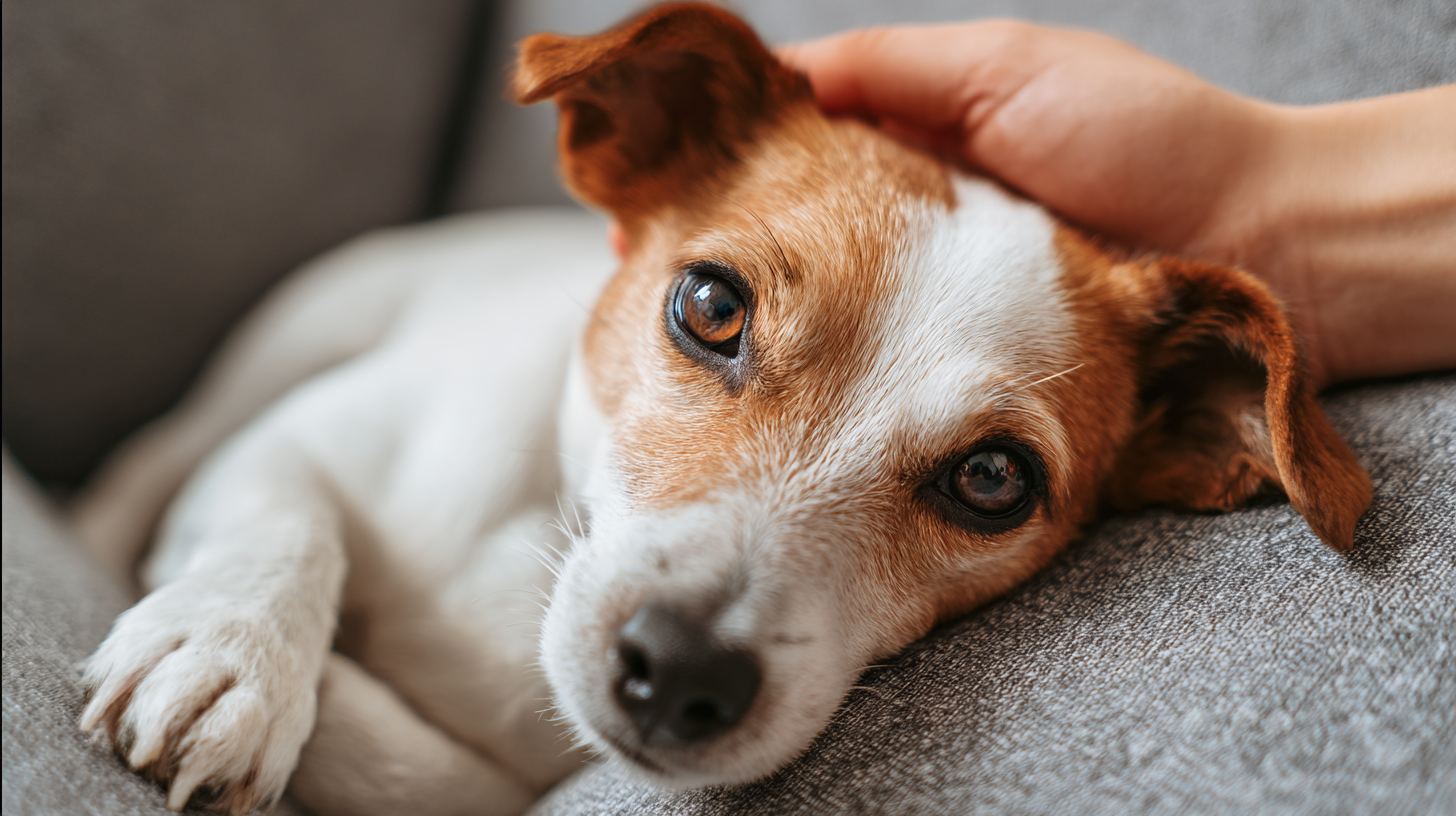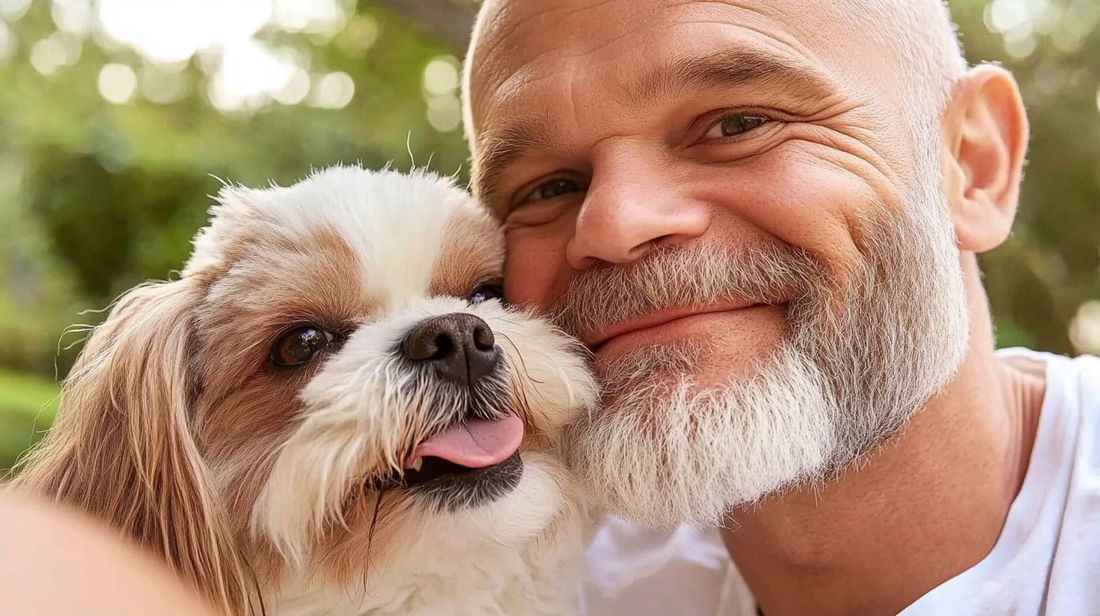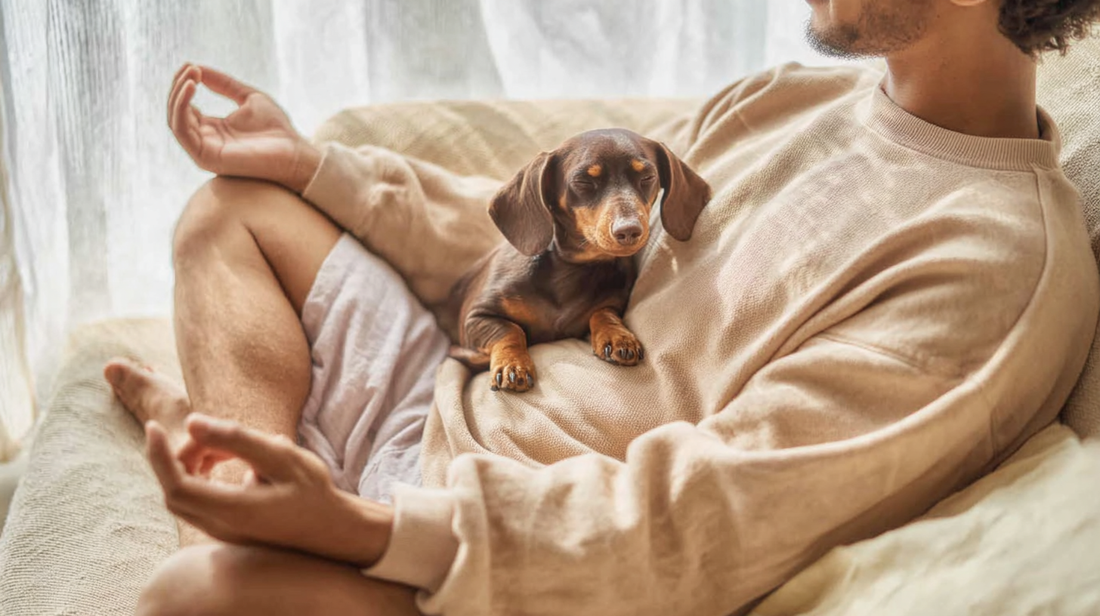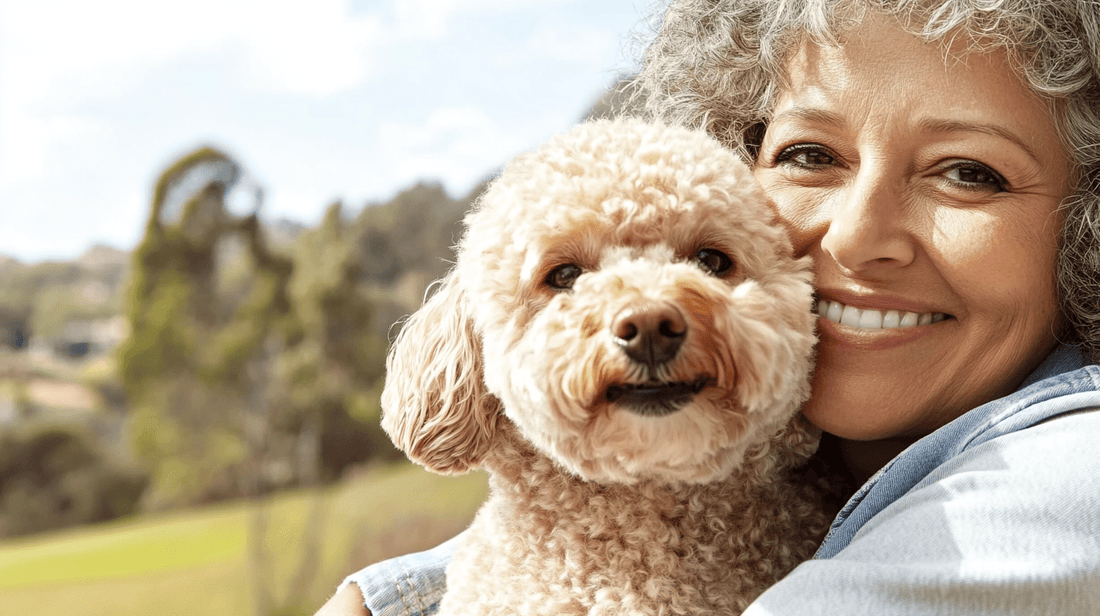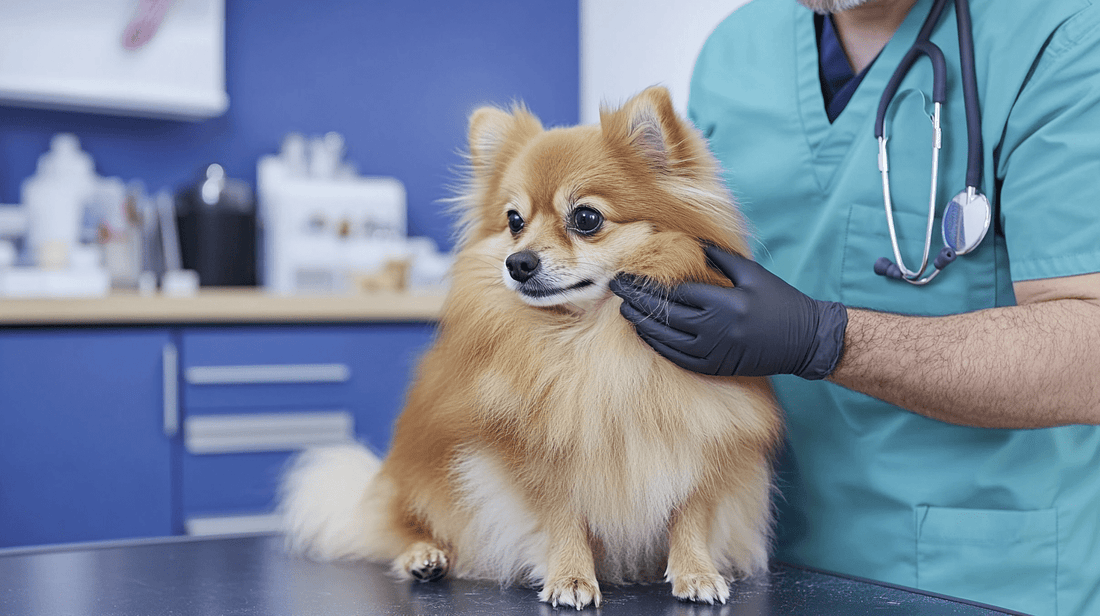Canine Health
Alpha-casozepine: Milk-derived relief for your anxious dog
Is your dog anxious? Discover how alpha-casozepine, a calming milk-derived compound, can help soothe stress without harsh medication side effects.
Learn moreHow L-theanine transforms anxious dogs into calm, confident companions
L-theanine offers a natural, science-backed way to support calmness in anxious dogs. Discover how it works, what the research shows, and how to use it.
Learn moreThe hidden costs of fear and anxiety on your dog's health and happiness
Fear and anxiety don’t just affect behavior. They can harm your dog’s health and shorten lifespan. Learn how stress impacts your pet and how to reduce it.
Learn moreEasing your dog's worries: can L-tryptophan help manage anxiety?
Does your dog struggle with anxiety? Discover how L-tryptophan—a natural amino acid linked to serotonin—may help reduce stress in dogs. Backed by research, this article explores how nutrition, especially when combined with other calming ingredients, can support emotional balance and well-being in anxious dogs.
Learn moreThe surprising connection between your dog's food and their anxiety levels
Can your dog’s dinner help ease their stress? New science says yes. This article explores the gut-brain connection in dogs and how nutrition—especially ingredients like L-tryptophan, tyrosine, omega-3s, and probiotics—can influence mood, behavior, and anxiety levels. Learn how feeding choices might support your dog’s emotional well-being, and discover expert-backed tips for calming nutrition that complements training and veterinary care.
Learn moreTurn your dog's visits to the vet into positive experiences.
Stepping into a veterinary clinic can feel like navigating a minefield for you as a dog owner. You love your furry companion and want them to receive the best healthcare possible, but witnessing the stress of a vet visit – the trembling, tucked tail, anxious panting, or even growling – can be heartbreaking. Research shows that a significant number of dogs display fear-related behaviors during veterinary visits . This fear complicates examinations, can distort medical measurements, and may escalate into aggression, creating safety risks for everyone involved. Reducing this stress is essential for your dog's well-being, ensuring they receive consistent care throughout their lifetime while creating a positive experience for both you and the veterinary team. The encouraging news is that numerous practical, evidence-based strategies exist that you can implement to help your dog feel more secure and less stressed. Summary Understanding why dogs fear veterinary visits Common stressors from your dog's perspective Preparing at home for a successful vet visit Building comfort through early handling training Essential comfort items to pack Strategic feeding and medication considerations Responsible muzzle training Creating a stress-free clinic experience Managing waiting room anxiety Creating a calmer exam room environment Working with your veterinary team for gentle handling Professional approaches to gentle handling Your active role: becoming the treat dispenser Reading and responding to stress signals Strategies for minimizing pain and discomfort Building positive associations for future visits The power of "happy visits" Behavioral modification through desensitization and counterconditioning Advanced training: cooperative care techniques Establishing a foundation for lifelong veterinary care Understanding why dogs fear veterinary visits For you as the owner, the vet clinic represents health and healing. For your dog, however, it presents an environment filled with unfamiliar and frightening experiences. Fear and anxiety constitute genuine, unpleasant emotional states that your dog experiences acutely. Common stressors from your dog's perspective What makes the veterinary environment so intimidating? Consider it from your dog's perspective: unfamiliar sights, sounds, and smells: the clinic overwhelms your dog with strange animals and people, potent unfamiliar odours like disinfectants or stress pheromones from other animals, and concerning noises like barking or medical equipment. uncomfortable surfaces: smooth or slippery floors and examination tables create instability under your dog's paws, making them feel insecure. leaving home: departing from your dog's familiar home environment triggers stress responses. loss of control: your dog experiences a lack of control in this unpredictable environment, particularly when strangers handle or restrain them. discomfort or pain: previous negative experiences involving discomfort or pain, or anticipating pain, can transform future visits into terrifying ordeals. Each visit where your dog experiences fear intensifies their anxiety for subsequent appointments. Your goal is to break this destructive cycle. Preparing at home for a successful vet visit Preparing your dog before leaving your house can create a remarkable difference in their veterinary experience. Building comfort through early handling training Train your dog to comfortably accept comprehensive handling throughout their body, including examination of their mouth and manipulation of their paws. Use positive reinforcement techniques – consistently rewarding your dog with treats or praise when they calmly accept handling. This familiarizes your dog with examination-type touching within a positive context. Essential comfort items to pack Familiar items provide substantial security for your anxious dog. Pack a blanket or towel from home that carries your dog's familiar scent, transforming a cold, unfamiliar surface into something more secure. Bringing your dog's favoured chews or toys for valuable distraction during stressful periods. Don't rely on regular kibble! Instead, bring small, irresistibly tasty, high-value treats that your dog rarely receives, such as cooked chicken or cheese. These special treats become your secret weapon for creating positive associations throughout the visit. Strategic feeding and medication considerations If your dog doesn't require fasting for a procedure, consider withholding their full meal before the appointment . This makes high-value treats more appealing and effective for distracting and rewarding your dog. For dogs who demonstrate significant fearfulness, your veterinarian might recommend anti-anxiety medication to be administered before leaving home. This isn't about sedation, but helping manage their fear response so they can cope more effectively. Your veterinarian will discuss the most appropriate medication and administration method. Responsible muzzle training If any possibility exists that your dog might snap or bite when frightened, training them to comfortably wear a muzzle using positive reinforcement represents a responsible preventive step. A properly introduced muzzle should become a neutral tool, never associated with punishment. Creating a stress-free clinic experience Once you arrive at the veterinary clinic, numerous strategies remain available to minimize your dog's stress levels. Managing waiting room anxiety Stress frequently begins in the waiting room. Seek clinics that offer separate waiting areas or visual barriers to reduce your dog's contact with other pets. When possible, wait outside or in your car, then call when ready to come inside once an exam room becomes available. Reception staff can help by offering treats to your dog (check for dietary restrictions first). This creates a beneficial association with the clinic environment. Use the comfort items you brought to help your dog relax. Remain mindful of your proximity to other animals, particularly if your dog tends toward resource guarding. Even getting weighed can trigger anxiety. Look for scales with non-slip surfaces and encourage your dog to step on voluntarily, rewarding them generously for cooperation. Creating a calmer exam room environment The examination room, particularly the exam table, often represents the most stressful component of the visit. When appropriate, ask whether smaller dogs can be examined on your lap , where they feel more secure. Non-slip mats on the table or floor are essential for helping your dog feel stable. Research studies indicate that removing animals "to the back" for minor procedures significantly increases stress levels , so request that procedures be performed with you present whenever possible. Veterinary clinics can contribute by maintaining a calm environment through quiet voices and avoiding disruptive noises. Some clinics use soothing music, which may provide additional calming effects. Working with your veterinary team for gentle handling The veterinary team plays a crucial role in minimizing stress through professional handling techniques, but you also maintain an important part in the process. Professional approaches to gentle handling A well-trained veterinary team will employ non-threatening body language when approaching your dog. This includes avoiding leaning directly over your dog, making direct eye contact initially, or approaching head-on. Instead, turning sideways, squatting down, and using smooth, slow movements combined with a calm voice create a less intimidating presence. Minimal restraint should be used whenever possible , as excessive force increases fear and aggression risk. Food can be used strategically to help your dog cooperate willingly. Your active role: becoming the treat dispenser This is where your high-value treats shine! Use them generously throughout the examination to distract your dog and create positive associations. You can provide a steady stream of small treats or offer a lickable paste from a tube while the veterinarian performs procedures. This helps your dog focus on the rewarding experience of eating rather than stressful handling. Reading and responding to stress signals Learn to recognize subtle signs that indicate your dog is becoming stressed : shifting body weight away, crouching, muscle tension, avoiding eye contact, freezing, agitation, or refusing treats. When you observe these warning signs, immediately communicate them to the veterinary team . Reacting early and adjusting the procedure can prevent stress from escalating. Strategies for minimizing pain and discomfort Some procedures, such as injections, remain unavoidable. However, distractions can help reduce your dog's perceived pain . For painful procedures like ear cleanings, your veterinarian may apply topical pain relief. Using the smallest practical needle size and ensuring needles remain sharp helps minimize discomfort. When administering oral medication, hiding it within palatable treats represents the optimal delivery method. Building positive associations for future visits Reducing stress isn't merely about managing your current visit; it's equally about preventing future fear responses and building positive associations over time. The power of "happy visits" Many progressive veterinary clinics encourage "Happy Visits" – brief trips to the clinic where your dog doesn't receive any examination or treatment . The goal is simply to arrive, receive treats from reception staff, step on the scale for a reward, or briefly enter an exam room for treats, then leave positively. These non-medical visits effectively reduce the risk of your dog developing conditioned fears related to the clinic environment. Behavioral modification through desensitization and counterconditioning These represent key behavioral modification techniques for preventing fear and addressing existing negative responses. Desensitization involves gradually exposing your dog to a fearful stimulus at very low intensity that doesn't trigger stress. Counterconditioning involves pairing that low-intensity stimulus with something positive, such as high-value treats. The process involves systematically breaking down examinations into tiny, manageable steps and rewarding your dog for remaining relaxed at each step. If your dog shows stress signs, the step was too challenging, and you need to return to an easier level. The aim is to change your dog's emotional response from fear to positive anticipation. Advanced training: cooperative care techniques Cooperative care training represents an advanced approach where you train your dog using positive reinforcement to voluntarily participate in veterinary procedures. This can involve training specific behaviors, such as presenting a paw for nail trims, opening their mouth for examinations, or standing calmly on a scale. Some dogs can even be trained to signal their readiness to proceed, stopping the procedure if they signal discomfort. Establishing a foundation for lifelong veterinary care Making veterinary visits positive benefits everyone involved. It improves your dog's welfare and health outcomes, reduces your stress, and increases veterinary team safety and satisfaction. Remember that preparation is key : training your dog to accept handling, bringing comfort items and high-value treats, and discussing pre-visit medication with your veterinarian can make a tremendous difference. During visits, focus on creating positive associations through treats and low-stress handling principles. Don't underestimate preventative measures like "Happy Visits" and behavioral training techniques to build your dog's confidence over time. Investing time and effort into these strategies leads to smoother veterinary visits now and contributes to better lifelong health care for your beloved companion. By working collaboratively with your veterinary team, you can help your dog feel safer and more comfortable, transforming vet visits from fearful experiences into something that might even become enjoyable. Dr. Stefan Novevski Dr. Stefan Novevski is a licensed veterinarian at a small animal clinic specializing in internal medicine, reproduction, dermatology, nutrition, and animal welfare, who continuously updates his expertise through professional development and international clinical experience while prioritizing client education for optimal pet health outcomes. Learn more The information in this article is based on the following scientific publications: Kato, M., Miyaji, K., Ohtani, N., Ohta, M. (2012). Effects of prescription diet on dealing with stressful situations and performance of anxiety-related behaviors in privately owned anxious dogs. Journal of Veterinary Behavior Clinical Applications and Research, 7, pp. 21-26. Riemer, S., Heritier, C., Windschnurer, I., Pratsch, L., Arhant, C., Affenzeller, N. (2021). A Review on Mitigating Fear and Aggression in Dogs and Cats in a Veterinary Setting. Animals, 11(1), p. 158. Looking for a solution? Start here Stylla Calmness for dogs Supports relaxation and emotional balance with amino acid-based formulation Promotes emotional balance and relaxation Helps maintain balanced behaviour Supports healthy physiological equilibrium Made in Switzerland with strict quality standards See Product
Learn more